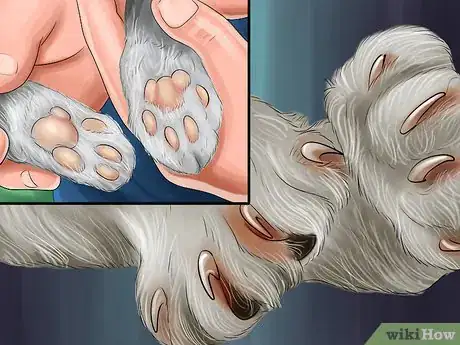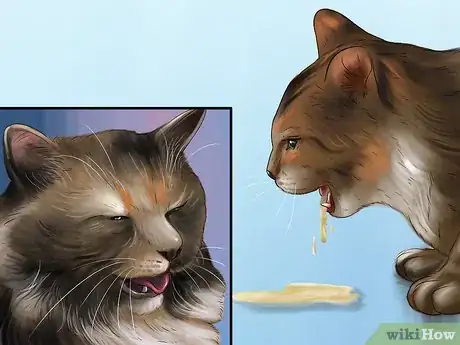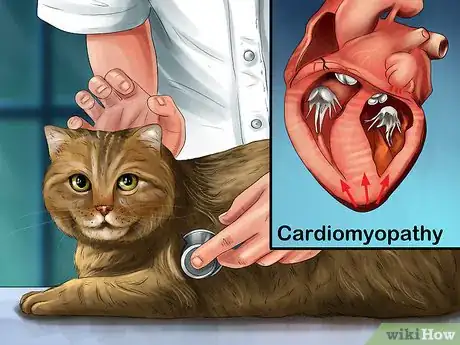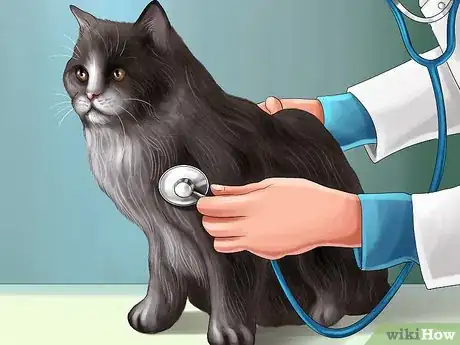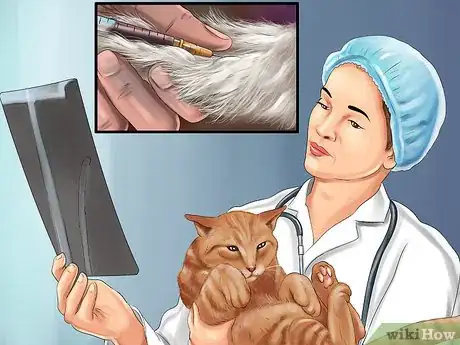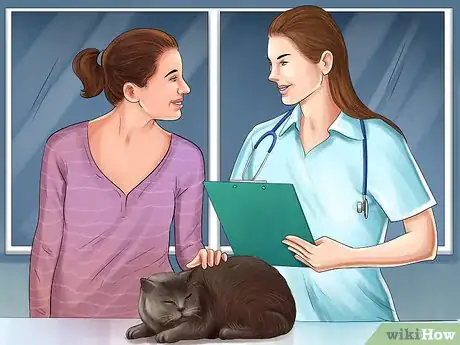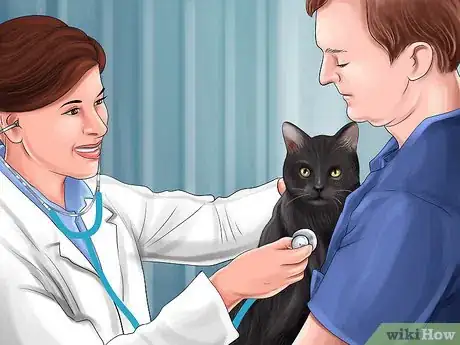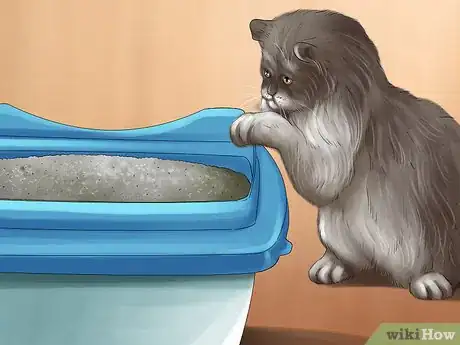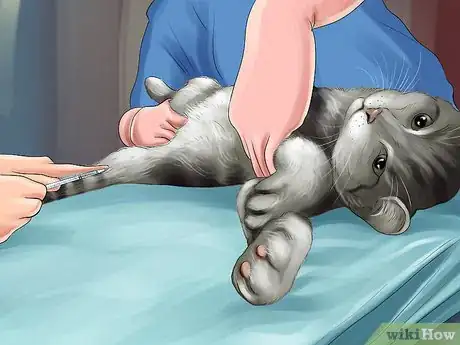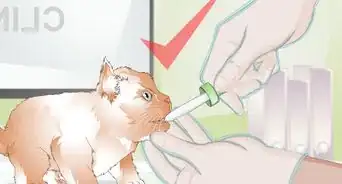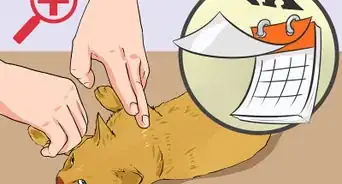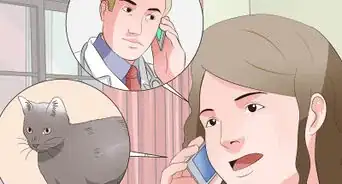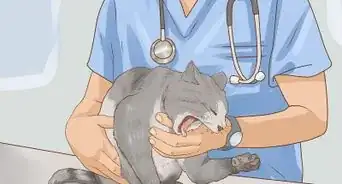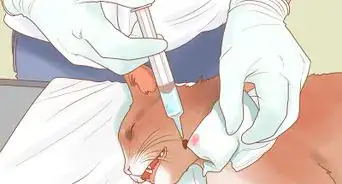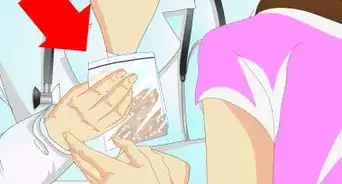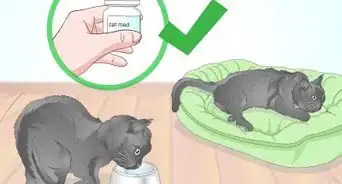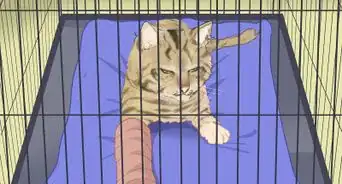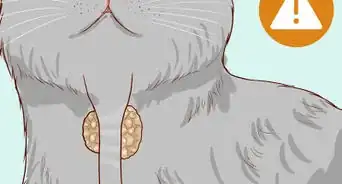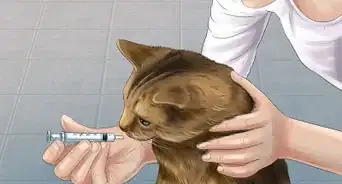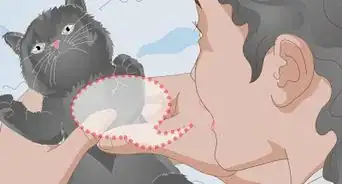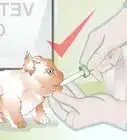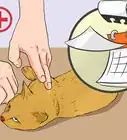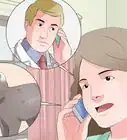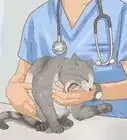This article was co-authored by Melissa Nelson, DVM, PhD. Dr. Nelson is a Veterinarian who specializes in Companion and Large Animal Medicine in Minnesota, where she has over 18 years of experience as a veterinarian in a rural clinic. She received her Doctor of Veterinary Medicine from the University of Minnesota in 1998.
This article has been viewed 30,753 times.
If you have a cat, it's important to be able to spot the signs of a blood clot in order to potentially save its life. Blood clots in cats are very serious, as they can block blood flow in the body and lead to paralysis or death very quickly. They need to be treated right away in order to give your cat a chance of survival. If you know the signs to look for and you know to get your cat to a veterinarian immediately if you see them, it is more likely that your cat will get effective treatment and survive this horrible illness.
Steps
Spotting the Signs of a Blood Clot
-
1Notice if your cat is having trouble walking or moving its legs. In many cases of blood clots in cats, the clot eliminates blood flow to the back legs. This makes it impossible for the cat to move its back legs. If you notice that your cat can't walk all of a sudden, take it to a veterinarian immediately.
- This inability to walk can begin with abnormalities in the cat's gait or lameness. If you notice that your cat is walking strangely, keep an eye on the cat and get it seen by a veterinarian as soon as possible.
-
2Look for the signs of lack of blood flow. If your cat has a blood clot it is likely that it has lost some of its blood circulation. Look for bluish or pale nail beds and foot pads, as well as areas of the body that are cooler than others.[1]
- If your cat has lost its ability to move its back legs, feel the legs. If they feel cooler than the rest of the cat's body, then they may not have blood flowing through them.
Advertisement -
3Assess your cat for other symptoms of blood clots. If you suspect that your cat has a blood clot you should assess it for other symptoms as you take it to be seen immediately by a veterinarian. It is likely that a cat with a blood clot will also present with some of these symptoms:[2]
- Vomiting
- Pain (especially in the legs)
- Difficulty breathing
- Anxious temperament
- Vocalizing, such as by crying, continuously meowing, or groaning.
-
4Keep an eye on cats that have a history of cardiomyopathy or blood infections. Cats that have a history of heart problems or problems with their blood are more likely to suffer from blood clots. For example, a lack of proper blood flow through the heart can lead to the formation of clots, which then travel through the body and block blood flow once they lodge somewhere. If your cat has had one of these medical problems, keep a close eye out for the symptoms of blood clots.
- If your cat has been treated for cardiomyopathy or blood infections, discuss the risk of clots with your veterinarian. Make sure that the veterinarian is giving your cat medication that can help minimize the threat of clots in the future and testing your cat regularly for problems that could cause clots.[3]
Getting a Veterinary Diagnosis
-
1Bring your cat to a veterinarian immediately. If you spot the signs of a blood clot in your cat it is important that you get it veterinary care immediately. You should literally pick your cat up and drive it to be seen by a veterinarian without delay. Getting prompt veterinary care can help to increase the likelihood that it will survive a blood clot.[4]
- Go to an emergency veterinary hospital if your normal clinic is closed or the veterinary hospital is closer.
-
2Give your veterinarian a thorough health history of your cat. When you bring your cat in for an emergency you may not be able to take it to its normal veterinary office. If this is the case, be sure to tell the veterinary staff all about your cat's health history, including any medications the cat is on and any serious illnesses it has had.[5]
- If you can't remember everything about your cat's health history, don't feel bad. Just do your best so that the veterinarian can have as much background information as possible. It is also a good idea to mention to the staff that you think your cat has a blood clot.
-
3Allow your veterinarian to proceed as they see fit. If your cat is very ill the veterinarian will likely take the cat away to be assessed immediately. They will begin lifesaving procedures and do testing to find the root of the cat's health problem. Allow them to do all of these things so that your cat has a better likelihood of surviving its illness.
- The veterinarian is likely to do testing on your cat's heart, usually including x-rays. They may also do testing to assess the blood flow in your cat's body.[6] The staff will likely do bloodwork on your cat as well.
Treating Blood Clots
-
1Approve immediate medical treatment. When your bring your cat into a veterinary office or emergency pet hospital for blood clots, it is likely that the staff will want to give your cat immediate care. Allow the veterinary workers to take your cat immediately and begin treatment to save your cat's life.[7]
- This immediate treatment usually includes testing of your cat's body functions to find out what is wrong and giving your cat medications, such as pain relievers and clot-dissolving drugs, if they suspect your cat has a clot. Surgery to remove the clot may also be required.
-
2Give continuing treatment. Once your cat has one clot, it is likely that it will get another and it is likely to be in a lot of pain while recovering. Discuss the ongoing treatments that your veterinarian prescribes in order to decrease the likelihood of your cat having another episode and to increase the likelihood of your cat recovering from its illness.[8]
- Ongoing treatment may include a variety of medications depending on your cat's health. However, it's likely you will be giving your cat medications that thin the blood, for instance clopidogrel or aspirin.
- If your cat recovers from a clot, it will need frequent check ups and tests to monitor its condition.
-
3Focus on making your cat comfortable. In some cases of blood clots, the cat will lose mobility due to the blood clot. It is especially common for them to lose movement in the back legs. In these cases, you will need to help your cat to stay comfortable and you may even need to help it use the bathroom when it needs to go.[9]
- It's important to let a recovering cat relax and mend in a quiet and stress-free environment.
- Discuss your cat's prognosis with its veterinarian and ask about exercises or movements that you can do with your cat to help its mobility. Some cats that have blood clots will never regain the use of their back legs again.
-
4Be realistic about your cat's chances of recovery. Only about one third of cats affected by blood clots survive the first clot. Even if your cat does survive the first clot, it may die from subsequent episodes or associated health problems. With this in mind, you need to be aware that if your cat has a blood clot, it may not survive.
- In severe cases of blood clots, if your cat is very ill, in pain, and not likely to recover, the veterinarian may suggest euthanasia.
References
- ↑ http://www.petmd.com/cat/conditions/cardiovascular/c_ct_aortic_thromboembolism
- ↑ http://www.petmd.com/cat/conditions/cardiovascular/c_ct_aortic_thromboembolism
- ↑ http://vetmed.illinois.edu/pet_column/study-looks-for-better-way-to-detect-cardiac-blood-clots-in-cats/
- ↑ http://www.drsfostersmith.com/pic/article.cfm?aid=1463
- ↑ http://www.petmd.com/cat/conditions/cardiovascular/c_ct_aortic_thromboembolism
- ↑ http://www.peteducation.com/article.cfm?c=1+2129&aid=3622
- ↑ http://www.drsfostersmith.com/pic/article.cfm?aid=1463
- ↑ http://www.petmd.com/cat/conditions/cardiovascular/c_ct_aortic_thromboembolism?page=2
- ↑ http://www.petmd.com/cat/conditions/cardiovascular/c_ct_aortic_thromboembolism
About This Article
To diagnose and treat blood clots in your cat, check if it is having troubling moving its legs or if its nail beds are bluish or pale, as this could signal a lack of blood flow. You should also look for other symptoms, such as vomiting, difficulty breathing, crying, and anxiety. If you notice any of these signs, take your cat to the vet immediately so they can perform any necessary tests and procedures. Since blood clots are serious, you may need to give them permission to perform immediate medical treatment, such as medication or surgery. For more help from our Veterinary co-author, including how to provide continuing treatment for your cat after a blood clot, scroll down!

